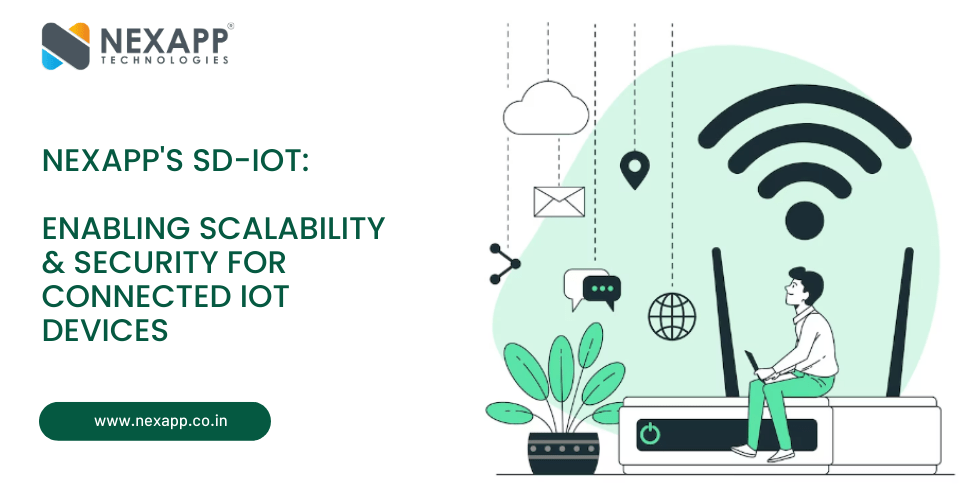
The Internet of Things (IoT) has revolutionized the way we interact with technology and the world around us. With the proliferation of connected devices, from smart homes to industrial automation, IoT is transforming various industries and enhancing our daily lives. However, as the number of IoT devices continues to grow exponentially, ensuring scalability and secure connectivity has become a daunting challenge. Software Defined IoT has been making a change and addressing many critical concerns.
The Role of Nexapp’s SD-IoT
Software-Defined IoT (SD-IoT) is an emerging paradigm that promises to address the scalability and secure connectivity challenges of IoT devices. It integrates the principles of Software-Defined Networking (SDN) with the IoT domain, offering a centralized, programmable, and flexible network architecture.
1. Centralized Network Control and Management
Nexapp’s SD-IoT allows centralized management of the entire IoT infrastructure. By decoupling the control plane from the data plane, administrators gain a holistic view of the network, enabling more efficient traffic routing, load balancing, and resource allocation. This centralized control facilitates seamless scaling of IoT networks and simplifies the addition of new devices without manual configurations.
2. Dynamic Resource Allocation
Nexapp’s SD-IoT leverages virtualization to create network slices, which are virtual segments optimized for specific IoT applications or device types. These slices enable dynamic resource allocation based on the varying demands of IoT services. As a result, network resources are allocated more efficiently, ensuring optimal performance and reducing resource wastage.
3. Improved Interoperability:
SD-IoT’s standardized control interface allows for better interoperability between diverse IoT devices, enabling the use of open communication protocols and APIs, fostering collaboration among different vendors and reducing integration challenges. This enhanced interoperability promotes a more cohesive and seamless IoT ecosystem.
4. Enhanced Security Measures:
Security is a paramount concern in the IoT landscape, and SD-IoT offers robust solutions to tackle potential threats. With a centralized security policy enforcement, administrators can implement uniform security measures across the entire network. Additionally, SD-IoT enables real-time threat detection and automated responses, mitigating potential risks promptly.
As the Internet of Things continues to revolutionize the world, the importance of scalable and secure IoT infrastructure cannot be understated. The traditional networking approaches struggle to keep pace with the exponential growth of IoT devices and the diverse challenges they pose. Software-Defined IoT (SD-IoT) emerges as a powerful solution, offering centralized control, dynamic resource allocation, improved interoperability, and enhanced security measures.
Nexapp’s SD-IoT’s ability to adapt to the changing IoT landscape makes it an essential enabler for the future of connected devices. By simplifying network management, improving security, and fostering interoperability, it holds the key to unlocking the full potential of IoT and propelling us into a more connected, efficient, and secure future. Embracing Nexapp’s SD-IoT solution will not only enhance the capabilities of IoT devices but also empower businesses and individuals to explore innovative use cases, furthering the transformation of industries and society as a whole.
To find out more about Nexapp’s SD-IoT, head over to Nexapp Technologies.


